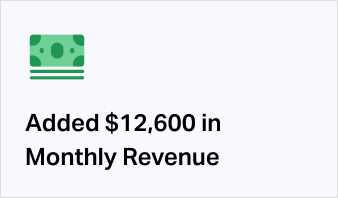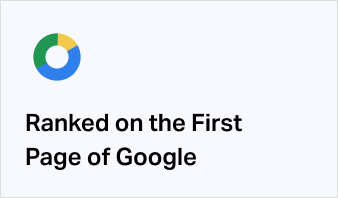Introduction
Are you a roofing contractor?
Are you willing to implement simple techniques to attract people searching for residential or commercial roofing contractors online and are ready to pay for your services?
Imagine how much money you’ll make if you get these customers to come to you without you having to pay tens of thousands of dollars on TV, Radio, or Newspaper advertising.
Certainly, your revenue will dramatically increase!
To reach these customers, pay more attention to search engines. Or what is popularly referred to as “Search Engine Optimization (SEO).
With SEO, 93% of people who want a new roofing project or roofing company can easily find your website, call your phone number, or visit your office.
Before I show you the secret, a few facts would inspire you.
The housing market has experienced a dramatic growth rate of 11.4% since 2008. Home pricing grew from $180,000 in the Q4 2008 to $200,700 in August 2017.
The interesting part is that most people are finding their dream homes on the internet. That’s where you come in. You need to position your website so that these home buyers can easily find your website.
And guess where home buyers and home sellers will look when they need a roofing company to upgrade the homes?
The internet.
They will find the best roofing company near them using the Google search engine or ask friends and family members to recommend the right contractors.
The demand for residential roofing products has grown exponentially in the past years due to new houses being built and new home sales reaching 629,000 in Signed Contracts.
There’s a big opportunity to get roofing jobs. When you add repair jobs, there’s an even bigger pool.
We can help you optimize and grow your roofing business revenue. Book a free consultation with Scott Keever.
Should roofing contractors embrace online marketing?
Yes, they should. When people are looking for real estate agents, real estate companies, or a roofing expert, in particular, they visit online marketing channels such as search engines (e.g., Google) and local directories like Yelp.
Additional resource:
Real Estate SEO: The Step-by-Step Guide to Grow Your Revenue
People use search engines when they want to buy a product or pay for a service. I’m sure you have bought an item online recently or in the past.
You might even be planning to buy the latest gadget on Amazon. In the same vein, when people are looking for a residential or commercial roofing contractor or search for a roofer in your city or state, showing up at the top of the search results will bring in more leads you can turn to customers.
Having said that, getting your roofing business website to rank high on Google requires more than just creating a website and hoping for the best.
You need to have a strategy. This will include steps you need to take to optimize your roofing website for both users and search engine crawlers.
If you’ve never done this before, this article will guide you accordingly.
I’ll show you simple ways give your roofing business the right exposure to potential customers in the search engines. Especially customers who search with any of these keywords:
Your city + roofing contractors (e.g., Boston roofing contractors)
Your state + roofing company (e.g., Texas roofing company)
Your state + roofing expert (e.g., Chicago roofing expert)
Your state + roofing products (e.g., Miami roofing products)
Your city + roofing products (e.g., Los Angeles roofing products)
Nearby state + roofing company (e.g., Cincinnati roofing company)
Nearby state + roofing companies (e.g., Texas roofing companies)
Best roofing company + your state (e.g., best roofing company California)
Best roofing expert + your city (e.g., best roofing expert San Francisco)
And so on.
You also want your roofing website to appear in Google top 10 results when customers search with any of these keywords:
Roofing company near me
Roofing expert near + your state (e.g., roofing expert near Chicago)
Roofing company near + your city (e.g., roofing company near Boston)
The list goes on and on.
That said, here are the specific steps you’re expected to take to rank in Google’s first page for any of the keywords variations above?
1. Blogging
You already know it’s vital to have a website for your business. On your website, you can have dedicated pages for About Us, Contact, Services, Projects, and other pages that give visitors your business information.
But make no mistakes about it. It’s difficult to bring visitors to a website that offers no value. That’s why a blog is more powerful and relevant for this purpose.
The major way of increasing organic traffic or any type of traffic at all is to have a blog. Added to that, you need to update it regularly with helpful articles, videos, podcasts, whitepaper reports, etc.
According to HubSpot, B2C companies that blogged 11+ times per month got more than 4 times as many leads than those that blog only 4 to 5 times per month.
You don’t have to post new content on your blog every single day. But you have to maintain a regular schedule.
For some, a 3-post in a week is okay while some prefer 2 posts per week. Some have found a convenient schedule that works for them. Brian Dean posts a few times in a month.
For your roofing business, having weekly posts is a good frequency to keep up with.
However, writing content isn’t the most important step in gaining organic traffic.
Producing useful content that you promote is the key to winning search engine rankings. Your content has to be ‘Effective’ if you want to rank in Google top 10.
Do you need help with blogging and SEO? Get a free consultation with Scott Keever.
What is Effective Content?
Effective content is a piece of content that meets your website visitors’ needs. Your ideal customer might be searching for information online that will help them to learn a new thing about roofing or solve an urgent roofing problem in their homes.
In a nutshell, an effective content is targeted to meet a ‘specific need’ of your customers.
In the light of solving specific problems that home buyers, home sellers, and those looking for a better roofing facility have, here are proven ways of creating effective articles for your roofing website?
i). Write long-form content: Content can be in different formats such as blog posts, video, slide presentations, infographics, and more. Since your roofing blog will be mostly blog posts, you have a responsibility to make it the best.
The truth is that short posts (300 – 800 words) are easier to write but they rarely rank high in search engines.
In fact, research compiled by QuickSprout showed that a post in the number #1 position on Google has an average of 2,450 words and an average post in the top 10 positions has over 2,000 words. In the words of Neil Patel:
Bear in mind that 2,000-word isn’t the magic number of words to have for your post.
These are only average numbers which means some industries such as real estate and roofing require longer articles compared to movies and film making, for example.
So does Google care about the length of your content?
Sure it does. Google stated that a piece of content is long enough when it has explained its topic to solve users’ problems.
What this means is that explaining a wide topic would require many words than a narrow topic. You’ll probably require a fewer number of words to explain “shingle replacement” than “a guide to roofing a house.”
One other element to add to your content is images. People find it easier to learn with visual content and it aids in explaining a concept better.
For example, Bens Roofing, a popular roofing contractor uses high-quality and relevant image(s) on their post — thus making it easier to read.
ii). Carry out keywords research: This activity helps you to know which terms your potential customers are searching for. When you’re armed with such data, you could optimize your content (i.e., blog posts) to target these keywords.
There’s a better explanation of keyword research later in this guide. So keep reading…
iii). Repurpose your content into various forms: To give your content a wider reach, it’s important to repurpose your content in other forms apart from the written text.
In some cases, explaining a roofing concept with a video would provide a better solution to your audience.
So if your blog post has been ‘truly’ useful and interesting, you can take the persuasive sections and create a video or slide presentation. You could also take the actionable points and create an infographic which you can share with other roofing companies and real estate agents.
They’ll cite and link to your roofing website as the source. These would serve as votes to boost your search rankings, lead generation, and revenue.
Content repurposing has been used by RedBull, Disney, Marvel, Marketo, and thousands of other businesses.
As an example, Marketo created Definitive Guides that run into 100 pages long. And because these guides are too big to consume at a go, Marketo decided to break it into easy-to-consume pieces, thereby creating infographics, webinars, videos, cheat sheets, etc.
You can take your best posts and produce a weekly or monthly podcast series targeted at homeowners with roofing questions or general roof repairs.
Better yet, you could interview a real estate agent or broker each week about the factors they consider when roofing a house or what they look for in a roofing contractor.
Then, you could take the transcript and create a useful blog post, create an infographic, or share a slide presentation on Slideshare.net.
This approach will send you more targeted traffic to your website and leads to your business. Don’t take it lightly.
Scott Keever SEO team can help you drive traffic to your website. Get a Free Consultation today.
2. Target the right keywords in your website pages
To take your roofing blog to another level of success, there’s a need to conduct keywords research to uncover the exact keywords that homeowners, home sellers, and other people who want a residential or commercial roofing job done are searching for.
This is one of the most important activities you can carry out to get more leads from search engines.
Why? Because if you do everything well but target the wrong keywords, then you’ll get leads that are less likely to pay for your service. This will defeat the purpose of what you’re trying to achieve in the first place.
Keywords research involves looking for the search terms that your ideal customers are likely to enter or input in a search engine box.
To carry out effective research, you need to define your ideal customer. This means you need to create a buyer persona. That’s usually the first step.
i). Creating a buyer persona
A buyer persona is a document where you list the details of your ideal customer. It helps to give focus to your overall marketing as you can create your messages specifically to influence this person who’s, of course, interested in hiring a roofing contractor.
Here’s a buyer persona example of a “Stay at Home Mom” to give you an idea:
A buyer persona should include as many details as possible about your ideal customer. Some of these details are:
Name
Age
Income
Family status
Job
Number of children
Working hours
Likes
Dislikes
You can add more details to those listed above. Adding as many details as possible makes your buyer persona real and human. You can have a few detailed buyer personas for your business if you have more than a single ideal customer. This would depend on how extensive your roofing service is.
After defining your buyer persona, you need to write out some head keywords. These are keywords that contain a few words. For example:
Roofing contractors
Best roofing company
Top roofing experts
Note: If you’re new to online marketing and SEO, then targeting head keywords will likely not get you results because they’re not defined. And they’re competitive.
That means a lot of roofing companies are targeting the same head keywords. Besides, when a homeowner, for example, searches for top roofing experts, does it mean they’re ready to hire a company yet? Well, it’s not defined.
The best approach is to target long-tail keywords. These keywords are well-defined because you know exactly what the customer wants. And it’s a lot easier to rank in Google top 10 for them because not too many of your competitors (i.e., roofing companies) are optimizing their website pages for them.
Examples of long-tail keywords:
Best roofing contractors in Orleans
Top commercial roofing companies near me
Cost of roofing a bungalow house
Moving on, for your keywords, you need them to have 2 traits:
a). Location-based keywords: In most cases, your ideal client is in the same city or town you have your business. Therefore, it’s important to target users in this locality. Your local keywords will usually include your location and roofing keyword.
If you do it right, you can increase traffic to your website by 320%.
Examples of local-based keywords are:
[city] roofers
[city] roofing contractors
[city] best residential roofers
Best commercial roofing company in [city]
Best roofers near me
These are examples of local keywords that potential customers might search for.
b). Long-tail keywords: Broad term keywords usually bring in more traffic to your website. But it’s much more difficult to rank for these keywords.
For instance, a term like “New York roofers” is difficult to rank for due to the high competition. It’s also difficult to determine the user intent behind such keywords.
However, a keyword like “emergency roof repair New York” will have a lower search volume and a weaker competition too. This means it’s easier to rank for these terms and the user intent is clearer. According to Moz, long-tail keywords represent 70% of search traffic.
That said, it’s impossible to do keywords research for your roofing company properly without the right tools.
These keywords research tools help you to see the search volume and the competition for that keyword. You can also get long-tail variations of head terms.
Some keywords research tools you can use to find the right roofing keywords are SEMRush, Ahrefs, Moz, Ubersuggest, KeywordTool.io, CognitiveSEO, etc. I’ll talk about 2 of them in this guide and how to use them.
KeywordTool.io pulls keywords from Google autocomplete to give you a larger list of keyword suggestions than what you see on Google. On this list, you can find long-tail variations of your keyword. This is important as these are terms that users are actually searching.
To get started, visit KeywordTool.io.
Enter your main keyword (e.g., roofing company in New York) into the search bar and click on “Search.”
You’ll see a list of keywords suggestions. However, you’ll need to subscribe to a paid version of the tool to unlock more keyword suggestions and details like search volume and Cost Per Click (CPC).
Another tool you can use for your keywords research is UberSuggest. This tool will show you the search volume for a keyword, SEO difficulty, Paid Difficulty, and CPC.
Apart from that, you can also find keyword ideas similar to the search term you’re researching.
To use the tool, visit the website and enter your keyword. You can also select your country to make the metrics more accurate.
Click on “Search” to begin the search.
To see more keyword suggestions, click on “Keyword ideas.”
On this page, you can also see the web pages currently ranking for the keywords. If you want to keep a copy of the data, you can download as a CSV file or copy to clipboard.
You can also apply a filter to your keyword ideas.
With proper keywords research, you can target the right keywords that your potential customers are using to look for commercial or residential roofing online.
3. Create and claim a Google My Business page
Google is by far the largest search engine. A large share of people searching are performing local searches — like searching for a roofing company in their locality. Research by Google shows that 4 in 5 consumers conduct local searches on search engines.
For many local searches, Google presents its local map pack which shows 3 businesses relevant to the search term in the locality.
To show up among the 3-pack, you’d have optimized your website and online presence for local searches. One way to do that is to have a well-optimized Google My Business page.
If you don’t have a Google My Business page for your business, you need to create one.
Visit the Google My Business home page and click on “Start Now.”
You’ll fill in your business name and other basic details like address and phone number.
You’ll also select a category for your business.
After filling out the necessary details about your business, you’ll need to verify it after your registration.
Google could send a pin to your business location or you can select other forms of verification. You should note that you’ll only have a full access to your Google My Business page after verification.
Now that you have this page, what are the steps you need to take to improve the chances of your page showing up for search terms?
i). Add more business details: You can add more details like Opening hours, Images of your business location, etc. This page should serve as an online business card. Any visitor to this page should have all the necessary information they need to contact you for roofing services.
ii). Add posts: Google allows you to add short posts to your page. Although the post usually lasts for a week, you can add posts weekly to keep your page updated.
There are templates you can use to announce an event or promotional offers.
iii). Encourage reviews: When you have a happy customer after doing a roofing job in their home, kindly ask them to rate your business and write a review on the page. I’ll talk more about reviews later in this guide.
Just remember that 92% of online consumers read reviews before choosing a local business like yours.
4. Add your roofing business to local listing directories
To check the authenticity of a local business, search engines will regularly check for the business’ details on local listing directories. The higher the number of local listings directories your business appears, the better.
BrightLocal conducted a research and discovered that a business that ranks in the top 3 positions of Google local search has an average of 85 local citations.
Having your business on local listing directories shows your business is authentic and can appear as a relevant local business.
There are so many local directories out there. Some of them are general listings for every type of business in any location e. g. Yelp.
You also have local directories that are related to particular businesses or a city. Some of the local listings your business should appear on are:
Yelp
Foursquare
Yahoo! Local
Bing Places
CitySearch
Craigslist
Localeze
Local.com
Yellow Pages
Super pages
MerchantCircle
Note: To give your listings the best effects possible, use a consistent business name, address, and phone number (NAP).
Before you begin adding your business to local business directories, write down the business name, address, and phone number you’ll use for every listing.
An inconsistent NAP can cause confusion for search engines. This would see your ranking drop rather than a rise in the organic results.
You can use a tool like Moz Local to check how consistent your listings are across various directories.
Encourage Reviews
No matter how good you are as a roofer, people will be skeptical of employing your services if you’ve never worked for other businesses.
The truth is that you may have worked for hundreds of people but if you have no ratings and reviews online, there’s no way a prospect can know.
Reviews, however, have a big impact on a prospect’s decision to check your business out. BrightLocal found that 85% of consumers trust online reviews as much as personal recommendations.
In most cases, satisfied customers don’t post reviews on your Google My Business page or other listings. You have to encourage them to do so. If you ask, many of them will post a review and rate your business.
For instance, 68% of consumers write an honest local business review when they were asked. You can always tell your customers to post a review after you’ve completed a roofing job or a minor roof repair.
5. Build Backlinks
For your roofing business website to rank well in Google search engine, there are 2 important things you must do:
On-Page optimization
Off-Page optimization
On-Page optimization is an aspect of search engine optimization that happens within your website. Or within the domain.
Laying out your website pages properly, researching and targeting the right keywords, creating useful content, fixing duplicate content, making sure your contact information is accessible on your website, and so on.
On the other hand, Off-Page optimization is another important aspect of increasing your website traffic and driving customers to your business. In general, off-page optimization boils down to getting backlinks.
Backlinks may be one of the most difficult off-page SEO tactics. However, it’s the most important. According to Google’s search analyst, Andrey Lipattsev, the 3 most important ranking signals are quality of content, backlinks, and Rankbrain.
Links are so important to Google for making decisions regarding the placement of websites in the organic results.
Brian Dean conducted a research and found a correlation between the number of referring domains to a page and its Google search ranking with about 300 referring domains to the number one result.
An important detail to keep at the back of your mind is that backlinks carry different effects. In fact, some backlinks are harmful to your website and could see your rankings drop rather than improve.
Having said that, a backlink from an authoritative website could make your roofing web page rank in a few weeks for a less-competitive and commercial keyword (e.g., best roofing contractor near me).
These backlinks would even have a bigger effect if the authoritative websites linking to your website are related to the roofing industry.
For instance, a backlink from an authority roofing website or a real estate website would have a big weight towards your rankings — since they’re more relevant than a health website. Here’s a link from a real estate company pointing to a real estate investing blog. Ain’t they relevant?
In the same way, backlinks from websites in your locality authenticate your business as a local business. This will give you a better ranking power for local searches.
When you’re ready to get high-quality backlinks, there are effective techniques you should use such as:
i). Guest posting
When you write an article to address an aspect of residential or commercial roofing that gets published on another website, you have access to their audience, customers, and trust.
This is an opportunity to establish your reputation as a roofing expert. It’s also an opportunity to gain a trusted backlink from the website.
Eastwood Roofing, a company that provides professional roofing services to clients in the Essex and its environs implemented online marketing to attract new customers looking for roof repairs and related services.
With content marketing, blogging, guest blogging, search engine optimization, and other proven strategies, in just 1 month of putting in the work, Eastwood Roofing generated an additional 680 website visits and lots of links, got 78 phone calls, received 5 emails and increased revenue by $10,300 — that’s a 400% ROI growth from an initial investment of $2,100.
ii). Posting on forums
There are forums where people post questions about different issues they have. Answering questions on this forums help to solve someone’s problem and also establish your reputation.
In some cases, if you have a post that answers their question in details, you can link to it.
iii). Participating in local events
These events are opportunities to meet other local business professionals and potential leads. You can also meet journalists who could mention your business on a local website as a participant.
iv). Track mentions for linking opportunities
Many times, websites could mention your business without adding a backlink. You can contact the webmaster to add a backlink.
There are other methods you can use to gain backlinks and that’s not an exhaustive list.
One other action to take while building backlinks is to analyze your current backlinks.
You can use a tool like Ahrefs.
It’s important that you maintain a healthy ratio between the number of referring domains and backlinks.
Having 3 million links from 20 domains will get you a Google penalty rather than a higher search ranking.
6. Implement Schema Markup
Even though search engines are very intelligent, it’s still difficult to get some details about a page. Schema Markup tells search engines important details about your business.
For instance, having your business address and phone number below your search engine result can increase the click-through rate to your page. Here’s an example:
Bear in mind that potential leads can contact you while they’re still on the search engine results page (SERP). There are many ways to implement schema markup. A website developer can implement the code on your website if you want.
Another way is to use the Google Structured Data Markup Helper. The first step is to select the category your page belongs to. Then insert the website address you want to markup.
The markup helper will open your web page and you can markup details on the page.
After this, click on the “Create HTML” button. You can then copy the HTML code with markup and replace it with your page source code. If you don’t know how to go about it, you can get a website developer to do it for you.
7. Optimize your website for mobile devices
If you want more leads to your roofing business from search engines, then it’s vital you optimize your website for mobile devices. Because about 60% of Google searches are done on mobile.
Another action that supports mobile optimization is Google’s mobile-first indexing.
This means the mobile version of your website will be indexed first before the desktop version. Having a poor mobile website could see your website rankings drop.
Having a mobile-responsive website means your website would adjust to any screen size your visitor is using. If you have a responsive website, then your website is good and homeowners and sellers looking for roofing services will love it.
To check if your website is mobile-optimized, you can test your website using the Google mobile-friendly test tool.
Simply enter your website address and you’ll see whether your website is mobile-friendly or not.
If there are other issues with your website, you’ll see them when you click on “View Details.”
Most people carry out their online research using a smartphone when looking for a roofing contractor near them. It’s necessary to have a website that’s accessible to Smartphone users and Tablet users — else, they leave or bounce from your website.
By optimizing its website for mobile and other strategies, RoofCrafters got a 4,342% increase in organic traffic and a decrease in bounce rate in 6 months.
8). Improve Page Speed
Does your roofing website load up quickly? I mean in as little as 3 seconds or less? If not, then you should do something about it. Why?
Because website visitors now want a website to load fast. In fact, the bounce rate of a website will increase as the load time increases.
Note: Basically, ‘Bounce rate’ is the rate at which your customers who came from search engine leave your website after viewing a page. In other words, they failed to visit other pages.
Your goal is to get a website visitor to view and read multiple pages on your roofing website.
To determine your mobile site speed, you can use the Google mobile speed test. Enter your website into the address bar.
You’ll get the page load speed and the estimated visitor loss due to the speed.
You can get an estimate of the page speed of top performers in your industry.
You can also send a full report to your email inbox some minutes later. This will show you things you need to fix on your website to reduce the load time.
Other steps you can take to improve your website speed are:
i). Use a fast host: Many times, websites are slow to load due to slow hosts. So use a premium web hosting provider such as Bluehost, Hostgator, etc.
ii). Use Google’s AMP pages: These pages load on mobile devices at an average of less than 0.5 seconds.
iii). Compress images and videos: Large images and videos contribute to a heavy page size. Reducing the size of your images and videos will reduce the page size and thus increase speed. You can use Movavi Video Compressor tool.
iv). Use a Content Delivery Network (CDN): A CDN hosts your images and videos instead of having them on your website. This will reduce your page size and
Conclusion
The roofing market and real estate industry, in general, is competitive. You’ll be competing with other businesses if you ignore online marketing.
To gain more leads and customers from search engines, you need to optimize your website and local business listings.
You need to create helpful content that solves problems for people looking for residential, office, and commercial roofing projects.
When your SEO strategy is positioned towards meeting your prospects’ and customers’ needs, you’ll gain a higher search engine ranking, increase your website traffic, and grow your revenue every single month.
Are you ready to get started with Roofing Business SEO? Do you have any questions?
Book a Free Consultation Today


Related Posts

Chiropractor Marketing and SEO: The Complete Step-by-Step Guide
The spine is a vital part of the human body. Without it, human beings would find it difficult…..

SEO for Plumbing Companies: How to Rank and Generate Leads Online
The only difference is that most plumbers tend to make a lot of mistakes with their websites…..

SEO For Financial Advisors: The Complete Guide for Getting Business Leads from Google Search
Implementing SEO for financial services is a ‘necessity’ if you want to attract new clients…







